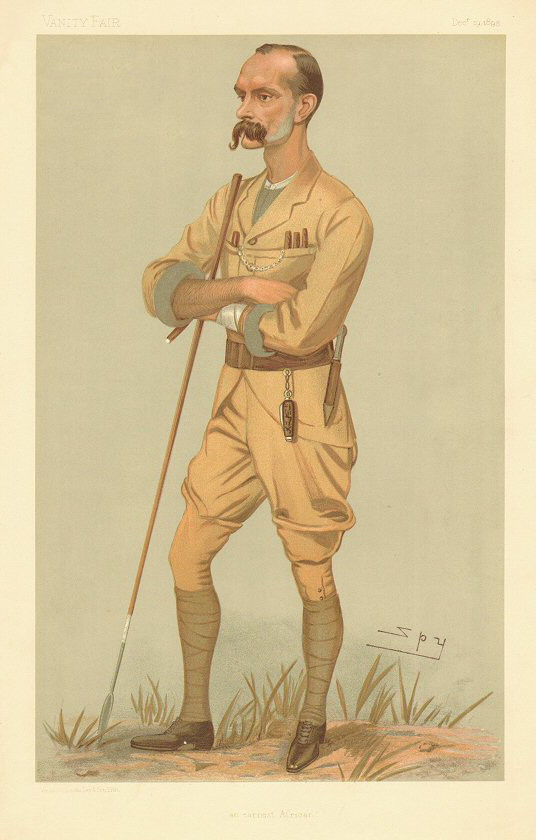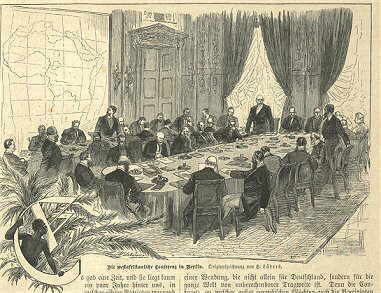|
Buganda Agreement (1900)
Signed in March 1900, this agreement formed the basis of British relations with Buganda, the Kabaka (King) was recognised as ruler of Buganda as long he remained faithful to her Majesty, the Lukiko (council of chiefs) given statutory recognition. This was following another agreement signed in 1894 in which the Kingdom of Buganda, then known as Uganda, was declared a British Protectorate.This agreement is also known as the Buganda Charter of Rights and was upheld for more than 50 years. The Uganda Agreement of 1900 The Uganda Agreement, 1900 (See Native Agreement and Buganda Native Laws, Laws of the Uganda Protectorate, Revised Edition 1935 Vol. VI, pp. 1373–1384; Laws of Uganda 1951 Revised Edition, Vol. VI, pp. 12–26) We, the undersigned, to wit, Sir Henry Hamilton Johnston, K.C.B., Her Majesty's Special Commissioner, Commander-in -Chief and Consul-General for the Uganda Protectorate and the adjoining Territories, on behalf of Her Majesty the Queen of Great Bri ... [...More Info...] [...Related Items...] OR: [Wikipedia] [Google] [Baidu] |
Mengo, Uganda
Mengo is a hill in Rubaga Division, Kampala, Uganda's capital and largest city. The name also applies to the neighborhood on that hill. Location Mengo is bordered by Old Kampala to the north, Nsambya Hill to the east, Kibuye to the south-east, Ndeeba to the south, Lubaga Hill to the west, and Namirembe Hill to the north-west. This location is approximately , by road, directly south of the central business district of Kampala. The coordinates of Mengo Hill are 0°18'06.0"N, 32°33'58.0"E (Latitude:0.301667; Longitude:32.566111). The peak of the hill is at above sea level. Overview Mengo Hill is the location of the main palace (known as Lubiri or Mengo Palace) of the Kabaka (King) of the Kingdom of Buganda, a monarchy that dates back almost 800 years. Mengo has been the main palace since it was first constructed in 1885 by Mwanga II of Buganda, the 31st Kabaka of Buganda. Measuring , the palace is ringed by a six-foot brick fence and has a small airstrip within its walls. Men ... [...More Info...] [...Related Items...] OR: [Wikipedia] [Google] [Baidu] |
Frederick Lugard, 1st Baron Lugard
Frederick John Dealtry Lugard, 1st Baron Lugard (22 January 1858 – 11 April 1945), known as Sir Frederick Lugard between 1901 and 1928, was a British soldier, mercenary, explorer of Africa and colonial administrator. He was Governor of Hong Kong (1907–1912), the last Governor of Southern Nigeria Protectorate (1912–1914), the first High Commissioner (1900–1906) and last Governor (1912–1914) of Northern Nigeria Protectorate and the first Governor-General of Nigeria (1914–1919). Early life and education Lugard was born in Madras (now Chennai) in India, but was brought up in Worcester, England. He was the son of the Reverend Frederick Grueber Lugard, a British Army chaplain at Madras, and his third wife Mary Howard (1819–1865), the youngest daughter of Reverend John Garton Howard (1786–1862), a younger son of landed gentry from Thorne and Melbourne near York. His paternal uncle was Sir Edward Lugard, Adjutant-General in India from 1857 to 1858 and Permanent Under- ... [...More Info...] [...Related Items...] OR: [Wikipedia] [Google] [Baidu] |
Portrait Of Harry Johnston
A portrait is a painting, photograph, sculpture, or other artistic representation of a person, in which the face and its expressions are predominant. The intent is to display the likeness, personality, and even the mood of the person. For this reason, in photography a portrait is generally not a snapshot, but a composed image of a person in a still position. A portrait often shows a person looking directly at the painter or photographer, in order to most successfully engage the subject with the viewer. History Prehistorical portraiture Plastered human skulls were reconstructed human skulls that were made in the ancient Levant between 9000 and 6000 BC in the Pre-Pottery Neolithic B period. They represent some of the oldest forms of art in the Middle East and demonstrate that the prehistoric population took great care in burying their ancestors below their homes. The skulls denote some of the earliest sculptural examples of portraiture in the history of art. Historical portraitu ... [...More Info...] [...Related Items...] OR: [Wikipedia] [Google] [Baidu] |
Lukiiko
{{refimprove, date=June 2014 The Lukiiko (sometimes Great Lukiiko) is the Parliament of the Kingdom of Buganda. It was, according to tradition, established by Kato Kintu, the first Kabaka of Buganda, after defeating the rival prince Bbemba, when he called a general meeting of influential people at Magongo. It took its present form as a result of the Buganda Agreement of 1900 and subsequent agreements. The Lukiiko is today convened at the Bulange Bulange (''boo-lah-ngeh''), is a building in Uganda. It houses the '' Lukiiko'' (Parliament) of the Kingdom of Buganda. The Kabaka of Buganda and the '' Katikkiro'' (Prime Minister) of Buganda also maintain offices in the building. The building .... The membership consists of directly-elected members from Buganda counties, Buganda county chiefs, members appointed by the Kabaka, and Buganda cabinet ministers. The current speaker is Nelson Kawalya, and the deputy speaker is Ahmed Lwasa. The Lukiiko is charged with legislating by-laws of t ... [...More Info...] [...Related Items...] OR: [Wikipedia] [Google] [Baidu] |
Daudi Cwa II Of Buganda
Daudi Chewa II was Kabaka of the Kingdom of Buganda from 1897 until 1939. He was the 34th Kabaka of Buganda has a surviving daughter, Princess Addah Balilara lives in Bujjuko, Kampala Life He was born on 8 August 1896, at Mengo. He was the fifth son of Kabaka Danieri Basammula-Ekkere Mwanga II Mukasa, Kabaka of Buganda, between 1884 and 1888 and between 1889 and 1897. His mother was Abakyala Evalini Kulabako, of the Ngabi Clan, the fourth of his father's sixteen wives. He ascended to the throne in August 1897 following the deposition of his father by British Forces. At the time of his coronation, he was only one year old. He maintained his capital at Mengo Hill. He was educated at Kings College Budo. which was founded in 1906 alongside Daudi, by the British Commissioner and commander in chief of the then Uganda protectorate - George Wilson CB On 8 August 1914, he received an honorary commission as a lieutenant in the British Army, and was appointed an honorary captain on 2 ... [...More Info...] [...Related Items...] OR: [Wikipedia] [Google] [Baidu] |
Kabaka Of Buganda
the kabaka Palace in kireka Kabaka is the title of the king of the Kingdom of Buganda.Stanley, H.M., 1899, Through the Dark Continent, London: G. Newnes, According to the traditions of the Baganda they are ruled by two kings, one spiritual and the other secular. The spiritual, or supernatural, king is represented by the Royal Drums, regalia called ''Mujaguzo'' and, as they always exist, the Buganda at any time will always have a king. ''Mujaguzo'', like any other king, has his own palace, officials, servants and palace guards. The material, human prince has to perform special cultural rites on the Royal Drums before he can be declared king of Buganda. Upon the birth of a royal prince or princess, the Royal Drums are sounded by drummers specially selected from a specified clan as a means of informing the subjects of the kingdom of the birth of a new member of the royal family. The same Royal Drums are sounded upon the death of a reigning king to officially announce the death of ... [...More Info...] [...Related Items...] OR: [Wikipedia] [Google] [Baidu] |
De Facto
''De facto'' ( ; , "in fact") describes practices that exist in reality, whether or not they are officially recognized by laws or other formal norms. It is commonly used to refer to what happens in practice, in contrast with ''de jure'' ("by law"), which refers to things that happen according to official law, regardless of whether the practice exists in reality. History In jurisprudence, it mainly means "practiced, but not necessarily defined by law" or "practiced or is valid, but not officially established". Basically, this expression is opposed to the concept of "de jure" (which means "as defined by law") when it comes to law, management or technology (such as standards) in the case of creation, development or application of "without" or "against" instructions, but in accordance with "with practice". When legal situations are discussed, "de jure" means "expressed by law", while "de facto" means action or what is practiced. Similar expressions: "essentially", "unofficial", "in ... [...More Info...] [...Related Items...] OR: [Wikipedia] [Google] [Baidu] |
De Jure
In law and government, ''de jure'' ( ; , "by law") describes practices that are legally recognized, regardless of whether the practice exists in reality. In contrast, ("in fact") describes situations that exist in reality, even if not legally recognized. Examples Between 1805 and 1914, the ruling dynasty of Egypt were subject to the rulers of the Ottoman Empire, but acted as de facto independent rulers who maintained a polite fiction of Ottoman suzerainty. However, starting from around 1882, the rulers had only de jure rule over Egypt, as it had by then become a British puppet state. Thus, by Ottoman law, Egypt was de jure a province of the Ottoman Empire, but de facto was part of the British Empire. In U.S. law, particularly after ''Brown v. Board of Education'' (1954), the difference between de facto segregation (segregation that existed because of the voluntary associations and neighborhoods) and de jure segregation (segregation that existed because of local laws that m ... [...More Info...] [...Related Items...] OR: [Wikipedia] [Google] [Baidu] |
Berlin Conference
The Berlin Conference of 1884–1885, also known as the Congo Conference (, ) or West Africa Conference (, ), regulated European colonisation and trade in Africa during the New Imperialism period and coincided with Germany's sudden emergence as an imperial power. The conference was organized by Otto von Bismarck, the first chancellor of Germany. Its outcome, the General Act of the Berlin Conference, can be seen as the formalisation of the Scramble for Africa, but some historians warn against an overemphasis of its role in the colonial partitioning of Africa, and draw attention to bilateral agreements concluded before and after the conference. The conference contributed to ushering in a period of heightened colonial activity by European powers, which eliminated or overrode most existing forms of African autonomy and self-governance. Of the fourteen countries being represented, six of them – Austria-Hungary, Russia, Denmark, the Netherlands, Sweden–Norway, and the Unite ... [...More Info...] [...Related Items...] OR: [Wikipedia] [Google] [Baidu] |
Henry Edward Colvile
Major-General Sir Henry Edward Colvile, (10 July 1852 – 25 November 1907) was an English soldier. Biography Colvile was born at Kirkby Hall, Leicestershire, the son of Charles Robert Colvile and Hon. Katherine Sarah Georgina Russell. Colvile was educated at Eton, and entered the Grenadier Guards in 1870. He was appointed A.D.C. to General the Hon. Sir Leicester Smyth, commanding the forces in South Africa, in 1880. He served on the Intelligence Department of the Suakin Expedition of 1884, was present at the Battles of El Teb and the Battle of Tamai, mentioned in despatches, and received the bronze star, medal, and clasp. He was employed on special service in the Sudan prior to the Nile Expedition of 1884–85, and during that Expedition served as D.A.A.G. ; was mentioned in despatches ; received the clasp, and was created C.B. At the close of the Expedition he was Chief of the Intelligence Department of the Frontier Force ; was present at the Battle of Ginnis; was mentione ... [...More Info...] [...Related Items...] OR: [Wikipedia] [Google] [Baidu] |





